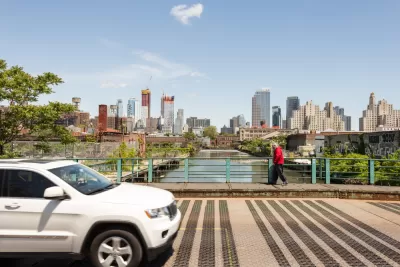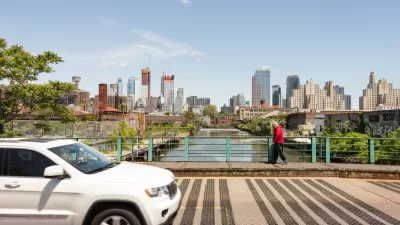A controversial zoning—one of the last of a de Blasio administration that has rezoned parts of every borough in the city—last week cleared a key City Council committee.

"Mayor Bill de Blasio’s controversial plan to rezone Gowanus is poised to move forward, fulfilling a decade-old ambition that aims to increase development and affordability in the fast-changing industrial enclave," reports Jake Offenhartz.
The City Council Land Use Committee voted to approve the rezoning on November 10, paving the way for up to 8,000 new apartments units, with one-third of those units reserved for low-income tenants, in the relatively wealthy corner of New York City.
The city's planning commission approved the Gowanus Neighborhood Planning Study in September, paving the way for last week's City Council’s Land Use Committee vote. The Gowanus rezoning plan previously encountered Covid-related delays and repeated bouts of controversy.
Offenhartz describe the rezoning as the largest upzoning of the de Blasio era—and there are plenty of other examples to compare, though the recent rezoning processes in Gowanus, along with the Envision NoHo/SoHo rezoning in Manhattan, are the first to focus on more affluent corners of the city (more on the same subject is found here and here). Earlier in its tenure, the de Blasio administration undertook rezonings in East New York, Downtown Far Rockaway, East Harlem, Jerome Avenue, Inwood, the Bay Street Corridor on Staten Island, Bushwick, and a swath of Southern Boulevard in the Bronx.
In 2014, the de Blasio administration announced the Housing New York plan to spend $41 billion to create or preserve 200,000 affordable housing units in the city, which included a Mandatory Inclusionary Housing program that influenced all of these rezoning programs.
FULL STORY: Agreement On Gowanus Rezoning Will Bring 8,000 New Apartments, Public Housing Investment

Study: Maui’s Plan to Convert Vacation Rentals to Long-Term Housing Could Cause Nearly $1 Billion Economic Loss
The plan would reduce visitor accommodation by 25,% resulting in 1,900 jobs lost.

North Texas Transit Leaders Tout Benefits of TOD for Growing Region
At a summit focused on transit-oriented development, policymakers discussed how North Texas’ expanded light rail system can serve as a tool for economic growth.

Using Old Oil and Gas Wells for Green Energy Storage
Penn State researchers have found that repurposing abandoned oil and gas wells for geothermal-assisted compressed-air energy storage can boost efficiency, reduce environmental risks, and support clean energy and job transitions.

Santa Barbara Could Build Housing on County Land
County supervisors moved forward a proposal to build workforce housing on two county-owned parcels.

San Mateo Formally Opposes Freeway Project
The city council will send a letter to Caltrans urging the agency to reconsider a plan to expand the 101 through the city of San Mateo.

A Bronx Community Fights to Have its Voice Heard
After organizing and giving input for decades, the community around the Kingsbridge Armory might actually see it redeveloped — and they want to continue to have a say in how it goes.
Urban Design for Planners 1: Software Tools
This six-course series explores essential urban design concepts using open source software and equips planners with the tools they need to participate fully in the urban design process.
Planning for Universal Design
Learn the tools for implementing Universal Design in planning regulations.
Ascent Environmental
Borough of Carlisle
Institute for Housing and Urban Development Studies (IHS)
City of Grandview
Harvard GSD Executive Education
Toledo-Lucas County Plan Commissions
Salt Lake City
NYU Wagner Graduate School of Public Service



























